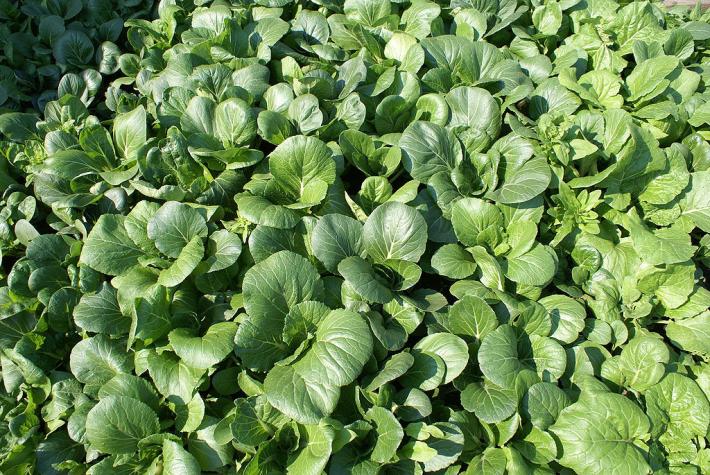COLUMBIA, Mo. – The sunny, warm days and cool nights of a typical Missouri autumn are ideal for cool-season vegetables such as Chinese cabbage, said University of Missouri Extension horticulturist David Trinklein. Now is a good time to sow Chinese cabbage seeds so plants will be ready to establish in the garden in late summer.
Archeological records indicate Chinese cabbage has been cultivated for more than 6,000 years. The common name “Chinese cabbage” refers to several subspecies of Brassica campestris, which is a member of the mustard plant family.
Chinese cabbage tolerates cold but not heat. When it develops in primarily hot weather, it forms a flower stalk (bolt) rather than a head. “Planting this crop in the spring often results in disappointment when temperatures warm prematurely,” said Trinklein.
Sow Chinese cabbage seeds now to make early growth during hot weather. They will not get big enough to flower, but when it cools and plants become larger, they will form heads instead of flowers.
Sow the seeds in flats or pots in a soilless germination medium. Place containers in a protected location with morning sun and afternoon shade. Fertilize and water young plants as needed.
Alternatively, wait until late August and sow seeds directly in the garden to avoid the need to transplant. However, soil may crust from overhead irrigation or pelting rains. This usually leads to poor germination. If possible, lightly water seeds sown directly in the garden daily. This keeps the soil moist and cool and improves germination.
Most Chinese cabbage varieties need about three to four weeks to grow large enough to transplant and another 65-70 days before harvest. Mature heads can endure light frosts but not severe freezes.
Soil considerations (such as fertility, pH and preparation) for Chinese cabbage are much the same as for regular cabbage, said Trinklein. Choose soil with good structure, fertility and water-holding capacity. Chinese cabbage prefers soil with a pH in the 6.0 to 6.2 range.
Timing of nitrogen application is important. If you make a preplant application of fertilizer, side dress with nitrogen at 10-day intervals after transplanting or thinning. However, too much nitrogen leads to lush vegetative growth that is prone to disease.
Chinese cabbage’s improvement over the years has resulted in several new varieties. An excellent variety among the taller-headed (Michihli) types is Jade Pagoda, said Trinklein. It is relatively heat-tolerant and produces firm, cylindrical heads 16 inches long and about 6 inches wide. Green Rocket is another good variety with long heads, crisp leaves and good storage life, he said.
Blues and China Gold are two relatively new, barrel-shaped Napa types of Chinese cabbage. Both mature early, which makes them good choices for fall planting. Both are slow to bolt, form firm heads and have good external and internal color and quality.
Another Asian vegetable you can start now is pak choi, also known as bok choy or Chinese celery cabbage. Its white stems somewhat resemble celery. Most varieties need about 50 days to mature. Because it grows rapidly, start pak choi later in the fall than Chinese cabbage. Asian Delight and Bopak are two new varieties that won the coveted All-America Selection award. Both form 5-7-inch heads with tender, white stems and dark green, textured leaves.
Insect control on young Chinese cabbage or pak choi plants is important. Cabbage worms can quickly devour the young, tender plants. Leaf damage at this early stage also can slow growth. If injured severely, young plants might not have time to recover and form heads before the weather turns cold.
Harvest Chinese cabbage when heads are firm and compact. Store up to six weeks in a plastic bag in the crisper compartment of a refrigerator.
Photo
Boy choy
Bok choy, or pak choi, is a type of Chinese cabbage. Photo by JS, CC BY-SA 3.0, via Wikimedia Commons.
